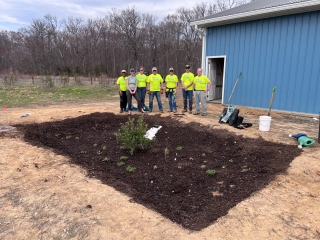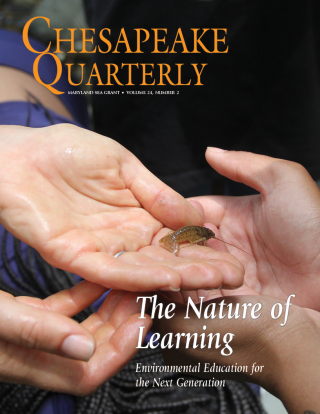Knauss legislative fellowships in Congress help build careers — and they're fun and educational. See our video and fact sheet for details.
Rain Gardens Make the Most of Nature’s Water Filtration Power
It’s easy to picture the thousands of creeks and streams that flow into rivers and ultimately, feed into the Chesapeake Bay. What’s harder to picture are the 64,000 square miles of the Chesapeake Bay watershed that feed those creeks and streams.
Across the watershed, rainwater falls onto roofs and roads, especially in populated areas. As waters travel across these surfaces, they collect pollutants, which eventually flow into the ground and local waters.
Rain gardens trap water from rooftop downspouts or pavement into indented areas filled with plants, mulch, and specific layers of soil. The plants installed in rain gardens absorb excess nitrogen and phosphorous in the runoff to use as fertilizer, and other pollutants can be filtered out or trapped in the soil as the water slowly sinks through the garden layers, moves deeper into the ground, and ultimately joins with groundwater.
The Harford County Watershed Stewards Academy, a group interested in learning how to protect and restore their local portion of the Chesapeake Bay watershed, recently installed a rain garden as a capstone project.
Watershed Stewards Academy participants complete a yearlong program with a capstone project and at least 40 hours of classroom and field training in all aspects of stormwater management: project installation, community engagement, site assessment, and maintenance. These courses are offered in counties throughout Maryland.
The rain garden chronicled below rests on a conserved field in Edgewood, Maryland, owned by the Izaak Walton League of America. The relatively small garden, roughly 112 square feet, packs an outsized punch: it will filter rainwater draining from a 1,000 square foot area of a barn roof. About a dozen volunteers and three professional landscapers installed the rain garden on a sunny spring Saturday.
Before the installation, experts calculated how large the rain garden would need to be to properly treat the rainwater from the roof, and which native plants would be included. These native plants support pollinators like native bees and are well-suited to tolerate local weather conditions.
The garden sits in a slight depression compared to the surrounding area. This allows water to collect in the rain garden. But the garden’s top layer only scratches the surface. Beneath the blooms, carefully placed layers of sediment contribute to the rain garden’s success.
The first step? A lot of digging. Volunteers carefully dug a rectangular ditch about four feet deep, complete with sloped sides. The original dirt from that area was used to create a sloped area around the barn’s perimeter to help absorb additional runoff from the barn.
They also installed piping that connects the downspout from the roof to the rain garden. A slight slope in the pipe allows the water to flow into the garden’s drainage area.
Downspouts are a common source of runoff for rain gardens, but rain gardens can also treat rainwater that flows from streets and driveways. These gardens can be installed anywhere where rainwater naturally pools.
Next, volunteers dumped in layers of bio-soil, a special soil blend that promotes water filtration. It absorbs water better than topsoil and contains compost that will nourish the plants in the rain garden. They slowly added bio-soil in layers to the garden area, raked it even, and covered it with water to help the soil settle.
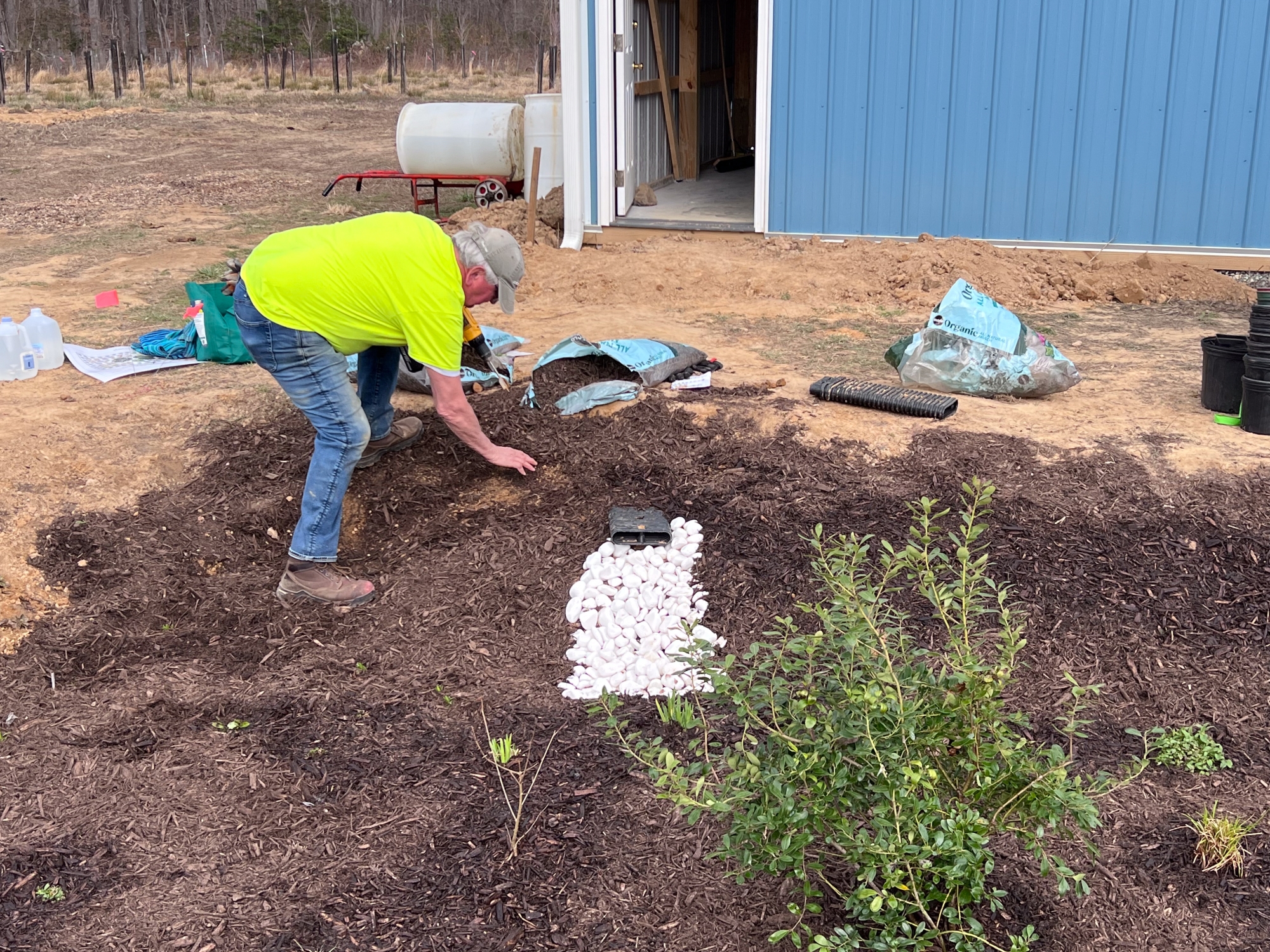
A mound of rocks beneath the downspout drain helps disperse the water throughout the garden and helps prevent heavy waterflow from eroding that corner of the rain garden.
Next, a variety of native plants were added to the rain garden. These plants were carefully selected based on their growth rates and bloom seasons. Most commonly, rain gardens are planted with perennial plants that return each year. Plants with deep roots are also used to help promote water filtration.
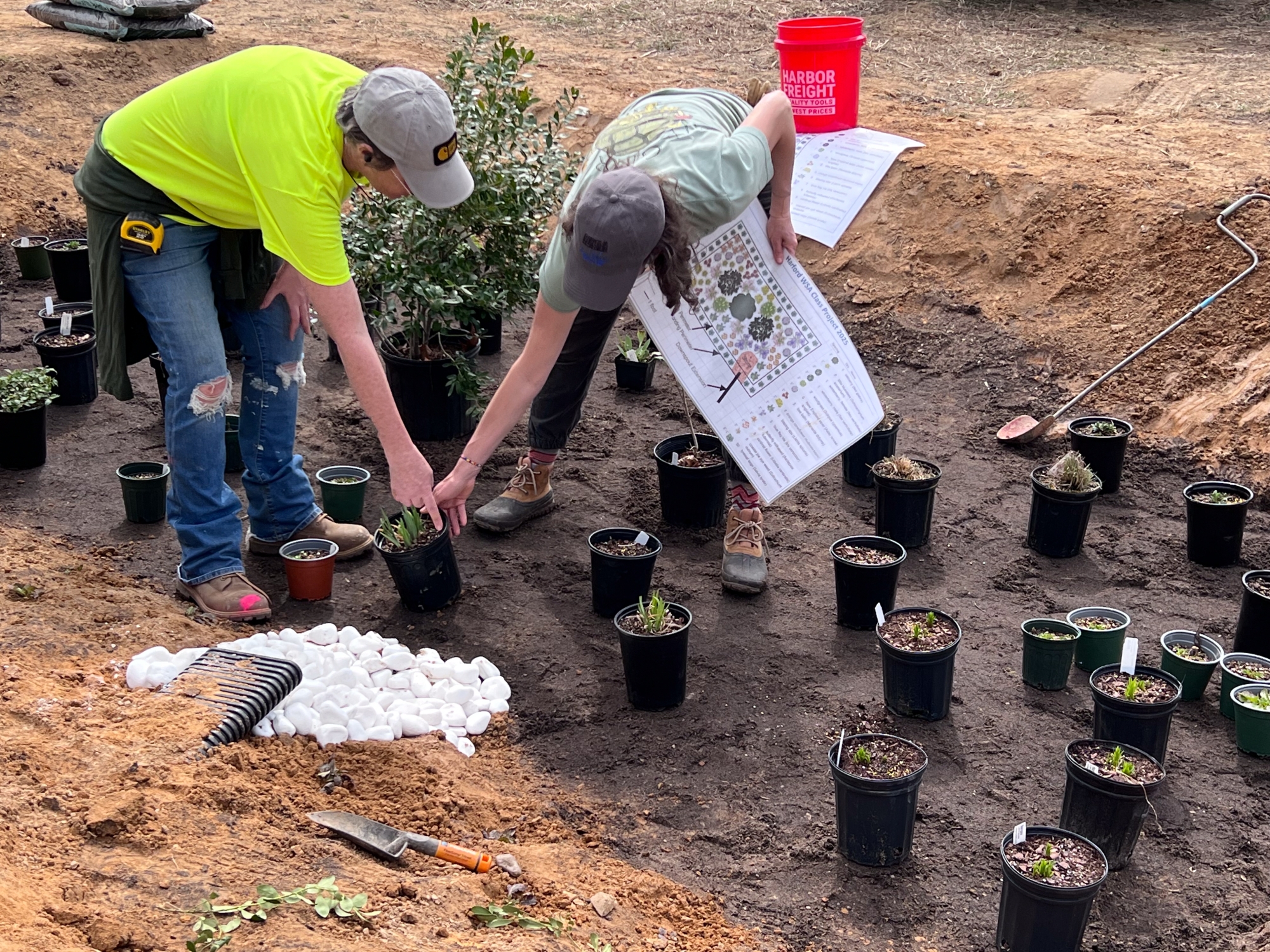
This garden includes inkberry and winterberry shrubs in the middle of the garden. Also among the dozen plant species here are pollinator-friendly blossoming plants like bee balm, orange coneflower, butterfly milkweed, cardinal flower, and coastal joe pye weed.
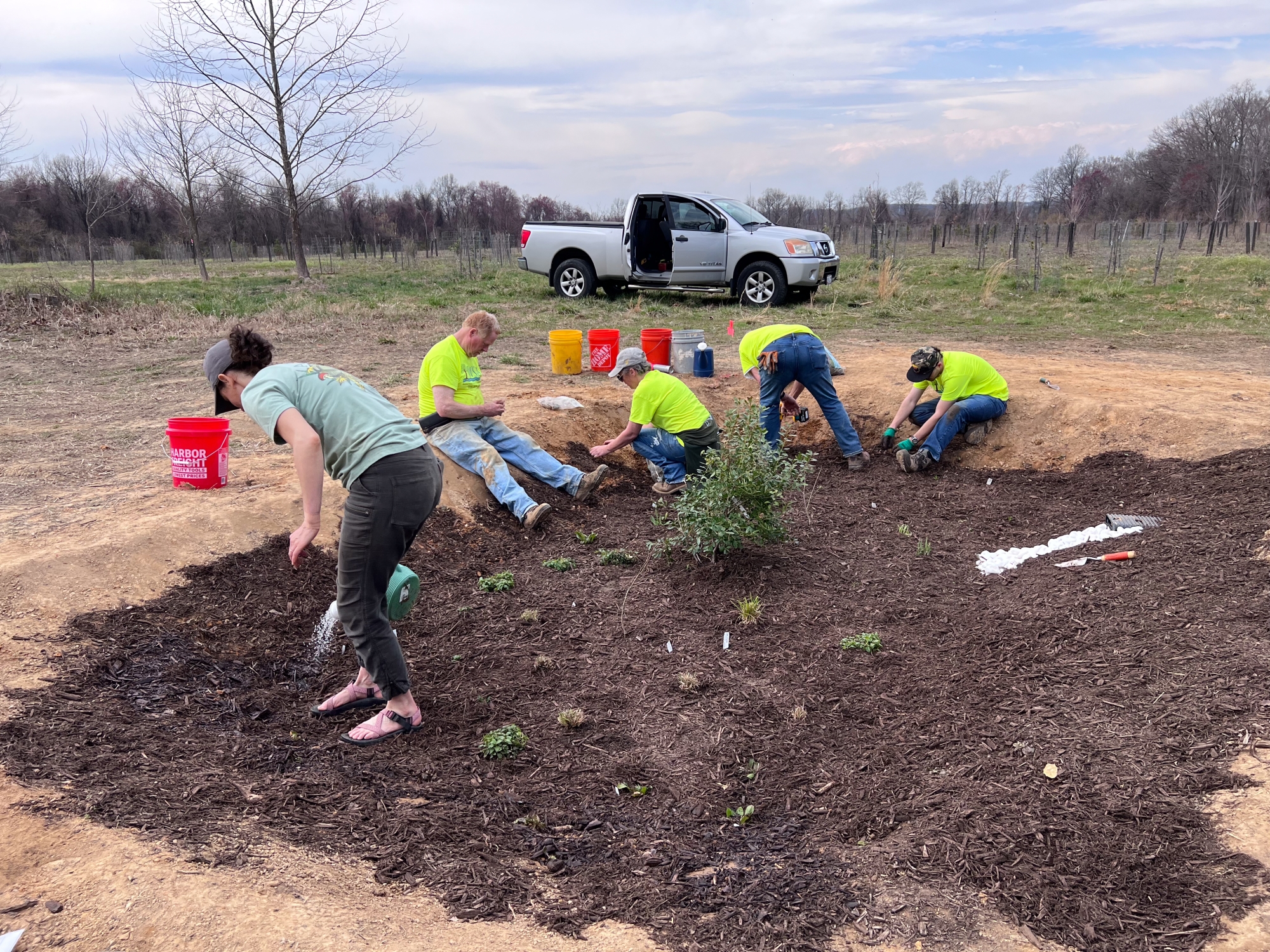
Along the rain garden’s sloped perimeter, the volunteers planted roughly 100 lyreleaf sage plants. The sloped edges encourage more water to drain into the layers of the rain garden for filtration.
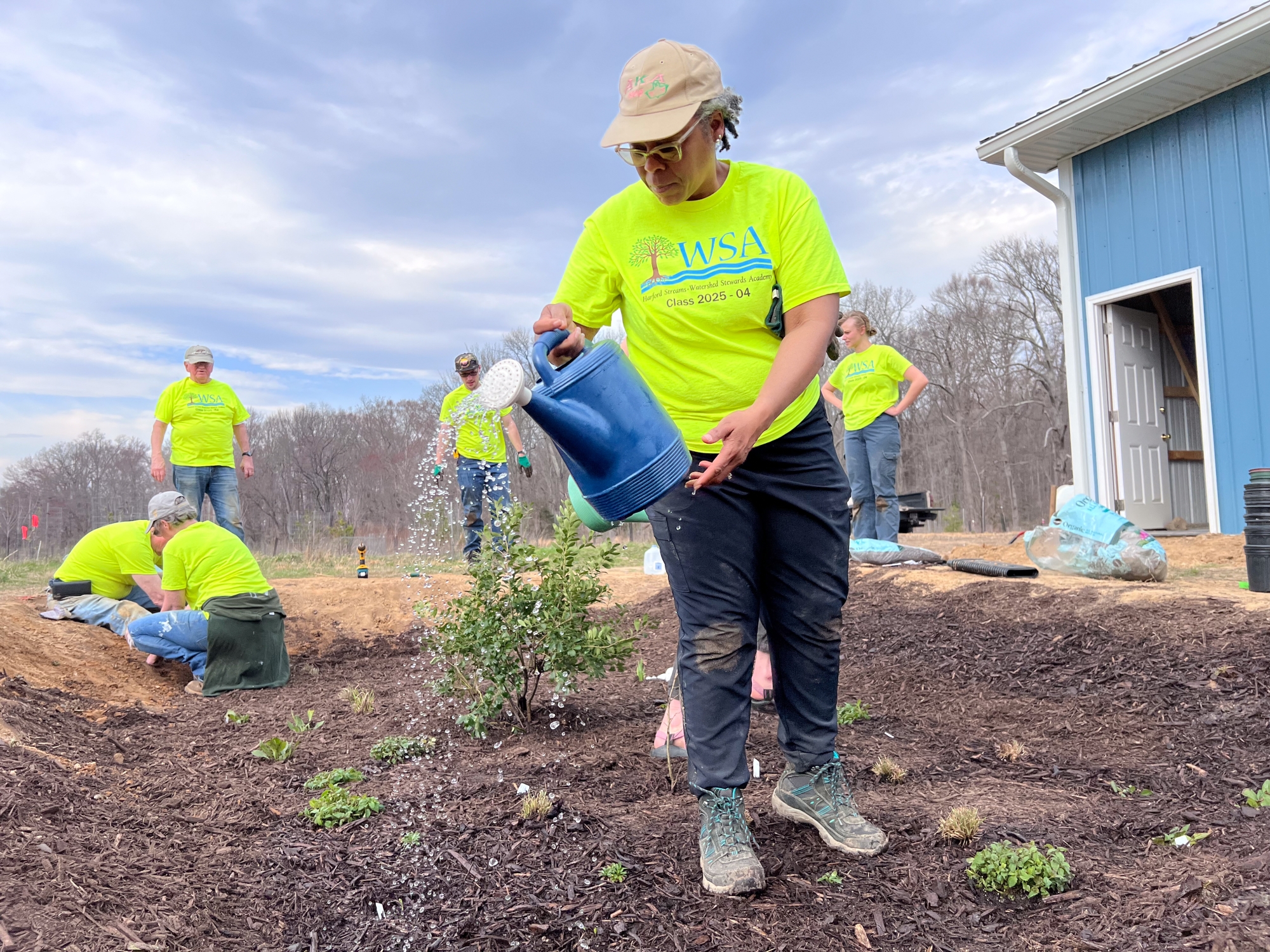
Finally, they added a layer of mulch around the plants to prevent weed growth and conserve water. It also helps to prevent surface sealing, in which the ground becomes too compacted to properly absorb rainwater.
Find more resources about rain gardens and how to install your own here.
See all posts from the On the Bay blog
